I worked on editing my Promo video this week, I finished editing, started exporting today, as soon as I show my dad, I will post my video on my YouTube channel, then will write a critique for it. Next week I plan to start the Shaw Challenge.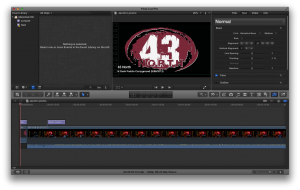
Author: Contributor
Videomaker Article
Mobile Apps for Video Producers: Montaj, Lapse It, Pinnacle Studio for iPad and Movie Slate, Videomaker article
by Contributor •
The issue for the article I’m doing a review on is the March 2014 issue of Videomaker magazine. The article was written by Chuck Peters.
In this article it talks about the different apps you can now get to make videos. They’re all different from each other, because they each do different things. Some of the apps it talks about are ones such as, Lapse it. This app allows you to make a time lapse video where it takes different shots over periods of time and then puts it into a cool video. Another one of the apps it talked about was Montaj. In this app you can take multiple 5 second shots and then add music to make a music video, there is also the option of different colored filters, etc. There was a couple more apps that were for video in which they help you find your footage easily without having to search for a long time.
Another one is really good for editing. I learned from this article that it’s easy to get apps for video making and what some helpful ones are. I can apply what I learned from this to class by, if I were to get any of these apps I could use them as practice before doing projects.
Here is the link to this article: http://www.videomaker.com/article/17246-mobile-apps-for-video-producers-montaj-lapse-it-pinnacle-studio-for-ipad-and-movie-slate
Videomaker Article
Videomaker Article-SOUND ADVICE: VOICEOVER TECHNIQUES
by Contributor •
Title: SOUND ADVICE: VOICEOVER TECHNIQUES Author: Hal Robertson Date: May 2002
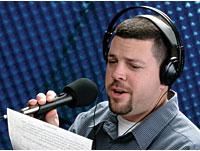 This Article talks about how with whatever you do for editing one time if not more you will need to do a voiceover for something and unless you have have money to buy professional voice actors and studio grade equipment, then the little things that could help.
This Article talks about how with whatever you do for editing one time if not more you will need to do a voiceover for something and unless you have have money to buy professional voice actors and studio grade equipment, then the little things that could help.
First and foremost is to have a well designed script of what will need to be said. Like the article states “Not only is the script the blueprint for your video, it’s also the roadmap for those parts of the program that require a voiceover.” So it is extremely important to have it well written. Make sure that everything is grammatically correct, your phrases are easy to pronounce, and it sounds good. No mater if you perform the script yourself or use someone else, read the script out loud a few times and listen for clumsy words and phrases. Make edits to what you think would need to be changed. The reader of the script will be very happy you did so.
The voice is the second thing you are going to need, you first have to decide if a male or female voice is what you are looking for. Are you looking for an High-octane professional type of voice or a relaxed and laid back type of styled voice. Either type of voice you are looking for this article states how if you look around your area there are probably people who would be able to do this for and if your not wanting to spend money there are probably some who would do it just to get a copy to have a demo for their future endeavors or you might just to have to do it yourself and hope you are what you are looking for.
The rest of this article really just talks about equipment that you can buy cheaply but work well and that you don’t need $1000 equipment to make it sounds good even though its nice if you have that type of money and equipment. It also talks about how during the editing process of the voiceover the ability to cut out sniffles, coughs or awkward pauses and make it sounds so much more professional. Also the voice modifications that you can do like deeper voice or different things like that to change the voice to make it more of what you were looking for. Voice overs are bound to be needed no matter what and it just matters how you approach it and treat it just as important as everything else so you do a good job as bad voiceovers can ruin a film/video.
Picture courtesy of: Robertson, Hal. “Sound Advice: Voiceover Techniques.” Videomaker.com. Videomakers, May 2002. Web. 24 Feb. 2014. <http://www.videomaker.com/article/8860-sound-advice-voiceover-techniques>.
Videomaker Article
VIDEO EDITING: GO WITH THE FLOW
by Contributor •
Title: “Video Editing: Go With The Flow” Author: Bill Davis Magazine Issue: July 2002
 This article talks about how a well edited movie can easily “hypnotize” your audience and cause them to just be focused on nothing but the movie just by having great editing even if the plot, acting and other things are not up to par.
This article talks about how a well edited movie can easily “hypnotize” your audience and cause them to just be focused on nothing but the movie just by having great editing even if the plot, acting and other things are not up to par.
The main thing this article talks about it how when editing and putting shots together and going from a moment to moment type of sequence that you can’t leave stuff out because what you see in your head might not what the audience is thinking in their head and thus changing the thought of how that scene progressed and possibly changing the story, but with like everyday things like opening a door, you could probably not have the one quick snippet scene of him/her opening the door handle as many people know what would be happening. Either way it would just make it simpler if you just kept all the little things even if it does take more time in the editing process because by making have a break in the action where certain things are not shown it my take the audience out of that “trance” they are in by amazing editing just by leaving one little things out that could of easily stayed in the film. Obviously though you don’t want a whole lot of unnecessary scenes. “The rule of thumb for scene pacing is the same as in all good moviemaking: if it doesn’t help the audience follow the action or help move the story along, get rid of it.” With what you do put it in make sure you trim and edit to perfection as the editing of a film is crucial to a successful film.
Picture courtesy of: Robertson, Hal. “Video Editing: Go with the Flow.” Videomaker.com. Videomakers, July 2002. Web. 24 Feb. 2014. <http://www.videomaker.com/article/8948-video-editing-go-with-the-flow>.
Uncategorized
Steadicam Gun
by Contributor •
While in a theater class yesterday I found a steadicam gun, if you do not know what this is 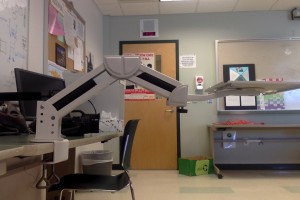 check out the movie Aliens. In the film there is a machine gun that is placed on a stabilizer (which can also be used as a steadicam) and it was then that director, James Cameron began to use the steadicam gun. Normally this product can range from $300 to a $1000. You guys got it for free, you’re welcome.
check out the movie Aliens. In the film there is a machine gun that is placed on a stabilizer (which can also be used as a steadicam) and it was then that director, James Cameron began to use the steadicam gun. Normally this product can range from $300 to a $1000. You guys got it for free, you’re welcome.
Videomaker Article
Using Color for Amazing Video
by Contributor •
I recently read the article “Camera Lens Filter Buyer’s Guide” by Carl Zeiss in Videomaker issue October 2013.
This article is talking about using different filters and what ones are better to use then the others.
I want to use filters. “These can be fun for dream sequences!” “Diffusion filters are even dreamier, as they soften a subject and add a creamy-dreamy look to an image.” “Filters are essentially pieces of glass or plastic placed in front of a camera lens to change the look of a shot or add a layer of protection between the lens and the elements.” These are Some popular filter brands are Tiffen, Canon, Carl Zeiss and Nikon Page 32
Weekly Progress Report
Week of 1/31
by Contributor •
I am working on my first project, the promotional video. I will try to finish it by vacation. Last week I filmed for the electives video, and started to make a list of songs that are in the promotional video I am working on.
Videomaker Article
Camera Lenses
by Contributor •
I’m sure we all had one of those days when we went out to buy a camera lense and you bought the wrong one or it didn’t do what you thought it would. Or maybe the lenses only made videos with terrible quality, but this is where all your struggles come to an end. With these handy tips you won’t have one of those issues again.
For most Camcorders they come with certain lenses that can’t be interchangeable with other lenses which leaves your options extremely limited. You could go out and buy more camcorders for the different lenses, but that’d be extremely expensive. Instead of doing that you should go and get a DSLR or a newer camcorder with interchangeable options.
To really know if you’re getting a good deal or not, you should learn some terms like the prime lens and the zoom lens. The Prime lens is considered the most used camera lens in the DSLR kitbag. Though the prime lens can’t zoom, it’s less complicated to use, on the other hand zoom lens’s do exactly what the name suggests. They allow the camera to zoom in on certain shots, but they are more complicated and can be harder to use.
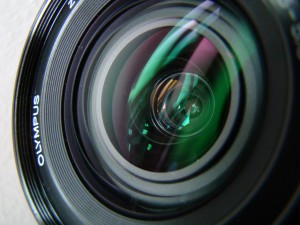
http://uberpix.wordpress.com/2009/11/30/the-eye-of-the-camera/dsc03697/
Focal length shots are crucial for most shooting pieces so you need to know which does which. Lenses with 24mm or less shoot a very wide field of view, lenses with 24mm-35mm shoot wide angles, they are mostly used to capture landscapes.
For more information please consult http://www.videomaker.com/article/17183-camera-lenses-buyer%E2%80%99s-guide an article made by Randy Hansen.
Videomaker Article
Bad Video Editing Habits
by Contributor •
After everybody’s favorite part of video class, the filming, comes the what seems to always take much longer then necessary video editing portion of the class. Even though good and bad video editing techniques is matter of opinion in the grand scheme of things, there are still several common mistakes people tend to make while editing their films.
The most common bad video editing technique would be “Winging It”. This is when someone jumps head first into the video editing portion without a real set plan on what they are going to cut out or add to their finished product.
Ignoring audio is another common mistake editors tend to do. Audio is just as important if not more important than the visual quality of the video being produced. Desyncing the audio to the film is easy to do if you’re not paying close attention and that can make your video turn out mediocre.
Finally stealing ideas can be a big problem without a person even realizing it. We all tend to want to emulate the great films/videos we see other students or film makers produce, but true originality is what gets a good grade. As well as avoiding a potential copyright infringement claim.
10 Bad Video Editing Habits to Give Up. Videomaker.com. Chris “Ace” Gates. December 13, 2013. <http://www.videomaker.com/videonews/2013/12/10-video-editing-habits-to-give-up>
Videomaker Article
Videomaker article review- Action sequence car chasing
by Contributor •
Title: Dynamic Chase Scenes Author: Peter John Ross, Magazine issue: Jan 2008
It is about how to make a well made car chase scene by getting a different amount of shot from closeups of the speedometer or the key in the ignition or push to start button if in the car also closeup of the tires spinning. To wide shots of the car with the driver in it driving the vehicle or car from behind driving away at top speeds. It also talks about how sound effects are easy 50% of the video, form just adding more loud spinning tires and police sirens and cars honking while the car drives away to make more tension and make the situation more intense.
I learned different shots you could use, and how just adding those little things could change how the whole video comes out and how it could effect the videos final thoughts from and audience.
I could use the different shots so i don’t have the same type of shots the whole time and at the end if theres isn’t enough good sound FX then add some more to make it better!
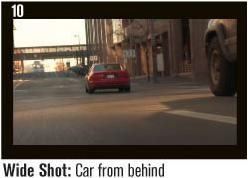 “Dynamic Chase Scenes.” Videomaker.com. N.p., n.d. Web. 04 Feb. 2014. <http://www.videomaker.com/article/13484-dynamic-chase-scenes>.
“Dynamic Chase Scenes.” Videomaker.com. N.p., n.d. Web. 04 Feb. 2014. <http://www.videomaker.com/article/13484-dynamic-chase-scenes>.


